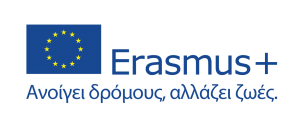Results
Final results Guide for Roma Inclusion in PDF Gymnasio Zipariou 2020-1-EL01-KA201-078810 GUIDE BG Gymnasio Zipariou 2020-1-EL01-KA201-078810 GUIDE EL Gymnasio Zipariou 2020-1-EL01-KA201-078810 GUIDE EN Gymnasio Zipariou 2020-1-EL01-KA201-078810 GUIDE ES Gymnasio Zipariou 2020-1-EL01-KA201-078810 GUIDE IT Gymnasio Zipariou 2020-1-EL01-KA201-078810 GUIDE PT Gymnasio Zipariou 2020-1-EL01-KA201-078810 GUIDE HU Guide for Roma Inclusion In Word 2020-1-EL01-KA201-078810 Roma students’ inclusion Guide PART A_BG […]
Mailing list / Newsletters
Join our mailing list to keep in touch https://forms.gle/fqmepDtKzotymfB38 Newsletter 1, March 2021 Roma N1
The Roma Of Greece – Roma in Rhodes
The Roma Of Greece The Roma Of Greece, settled or displaced, are part of the Roma living in almost all parts of the world. They first appeared around the 11th century in areas of the Byzantine Empire and somewhere between the 14th and 15thcentury in today’s Greek area. Since then they have lived in various […]
Roma Factsheet Greece
factsheet_greece_2014_en
«Let’s know each other: Strategy for the Equity Inclusion of Roma Students»
Title: «Let’s know each other: Strategy for the Equity Inclusion of Roma Students» Project code 2020-1-EL01-KA201-078810 Duration: 2 school years, end September 2022 Applicant Organisation Gymnasio Zipariou, Kos, Greece Partners: ICON Greece NGO, Greece V.E.M. srls Italy ISTITUTO PROFESSIONALE ALBERGHIERO TURISTICO, Italy Testvérvárosok Baráti Egyesülete NGO Hungary Szolnoki SZC Klapka György Szakgimnáziuma és Szakközépiskolája School […]
TPM 3 Kos Models Shaping REF Interventions
REF has extensive experience and knowledge surrounding the types of interventions in and approaches to Roma education. REF currently structures its grants around five good practice models for achieving impact in different countries and policy settings. Embedding effective models for Roma education requires strong partnerships with national and local education authorities and implies intense communication […]
Roma in Portugal
Presentations about Roma in the area and the educational system during the LTTA in Portugal at the partner school Agrupamento de Escolas de S. João da Talha PT Roma in Portugal PT Portuguese Educational System
Portugal Guide for Roma in Education
Presentation about the school Agrupamento de Escolas de S. João da Talha practices together with Municipality PT Best practices for Roma education
Presentation at TPM 3 Kos Greece Education of Roma Children
The Council of Europe began its involvement with the Roma in 1969 by adopting the first official text on the “situation of Gypsies and other Travellers in Europe”. In 1983 the Council organised the first training seminar for teachers working with Roma children. In 1993 the Roma population was declared a European minority.
LTTA 3 Portugal Report
Let’s know each other: Strategy for the Equity Inclusion of Roma Students Project code 2020-1-EL01-KA201-078810 The third LTTA took place between 05-10 March 2023 in Portugal, Lisbon, our host organization was Agrupamento de Escolas de S. João da Talha. 4 participants from each partner arrived – professionals and teachers who work with Roma students, Roma […]
LTTA 2 Bulgaria Report
Let’s know each other: Strategy for the Equity Inclusion of Roma Students Project code 2020-1-EL01-KA201-078810 The second LTTA took place between 03-07 October 2022 in Bulgaria, Kazanlak. The participants were professionals and teachers that work with Roma students and Roma people. The participants of the meeting arrived at Bulgaria on the 2nd of October, most […]
LTTA 1 Hungary Report
Let’s know each other: Strategy for the Equity Inclusion of Roma Students Project code 2020-1-EL01-KA201-078810 2nd report LTTA in Hungary 22-26 November 2022 The first LTTA took place between 22-26 November 2022 in Hungary, Jászberény. The main goal of the meeting was to gain deep insight into the Hungarian education system with the purpose to […]
The Roma strategy of association “Testvérvárosok Baráti Egyesülete” Hungary
The Roma strategy of association “Testvérvárosok Baráti Egyesülete”, related to support of Roma families The city of Jászberény has nine twin cities, it means that the different activities of the association are strongly connected to the activities of all the twin cities. Four of them have larger Roma communities. These are: 1./ Sucha Beskidzka (Poland), […]


